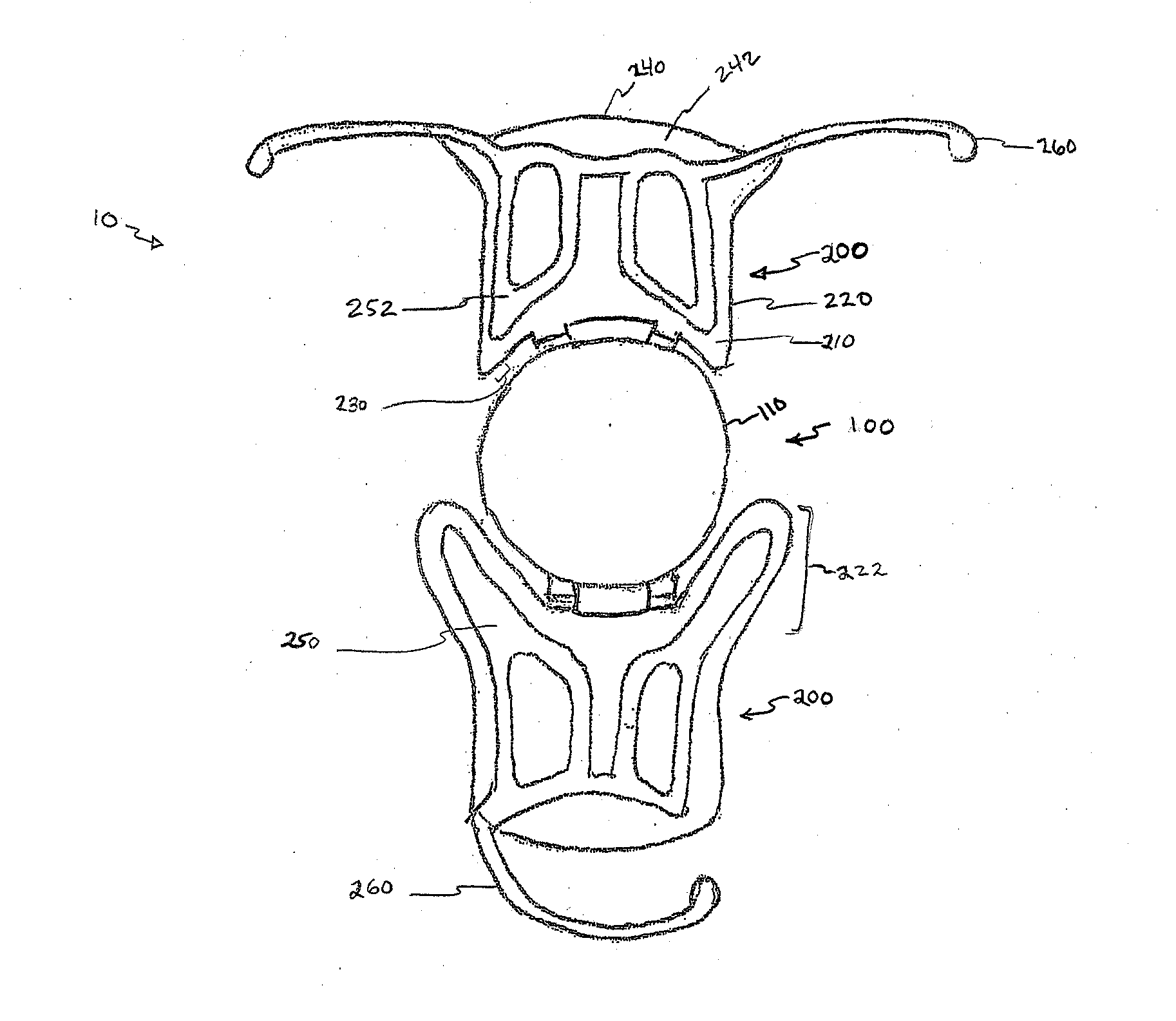Accommodating Intraocular Lens
a technology for intraocular lenses and lenses, applied in intraocular lenses, medical science, prostheses, etc., can solve the problems of reducing reducing the resistance of the optic, and not allowing adequate movement of the optics, so as to stabilize the optics, and reduce the overall width of the hinge
- Summary
- Abstract
- Description
- Claims
- Application Information
AI Technical Summary
Benefits of technology
Problems solved by technology
Method used
Image
Examples
Embodiment Construction
[0011]An accommodating intraocular lens design according to an embodiment of the present invention is described that overcomes the deficiencies of present designs noted above.
[0012]A flat, longitudinal accommodating intraocular lens is provided, having distinct separate plate haptics that are rigid longitudinally, but flexible transversely, and that extend to partially surround the optic. The flat plate haptics may have a groove or hinge across the width of its proximal ends adjacent to the optic. This hinge may be weakened by having at least two separate spaced apart narrow hinges on each edge of the plate haptics, thereby, reducing the overall width of the hinge. This plural strap design stabilizes the lens optic while reducing the resistance of the optic to a change in vitreous cavity pressure, thereby, allowing more movement of the optic along the axis of the eye. Further stabilization is achieved by making the haptics as wide, or wider, than the optic and extending the lateral ...
PUM
 Login to View More
Login to View More Abstract
Description
Claims
Application Information
 Login to View More
Login to View More - R&D
- Intellectual Property
- Life Sciences
- Materials
- Tech Scout
- Unparalleled Data Quality
- Higher Quality Content
- 60% Fewer Hallucinations
Browse by: Latest US Patents, China's latest patents, Technical Efficacy Thesaurus, Application Domain, Technology Topic, Popular Technical Reports.
© 2025 PatSnap. All rights reserved.Legal|Privacy policy|Modern Slavery Act Transparency Statement|Sitemap|About US| Contact US: help@patsnap.com


